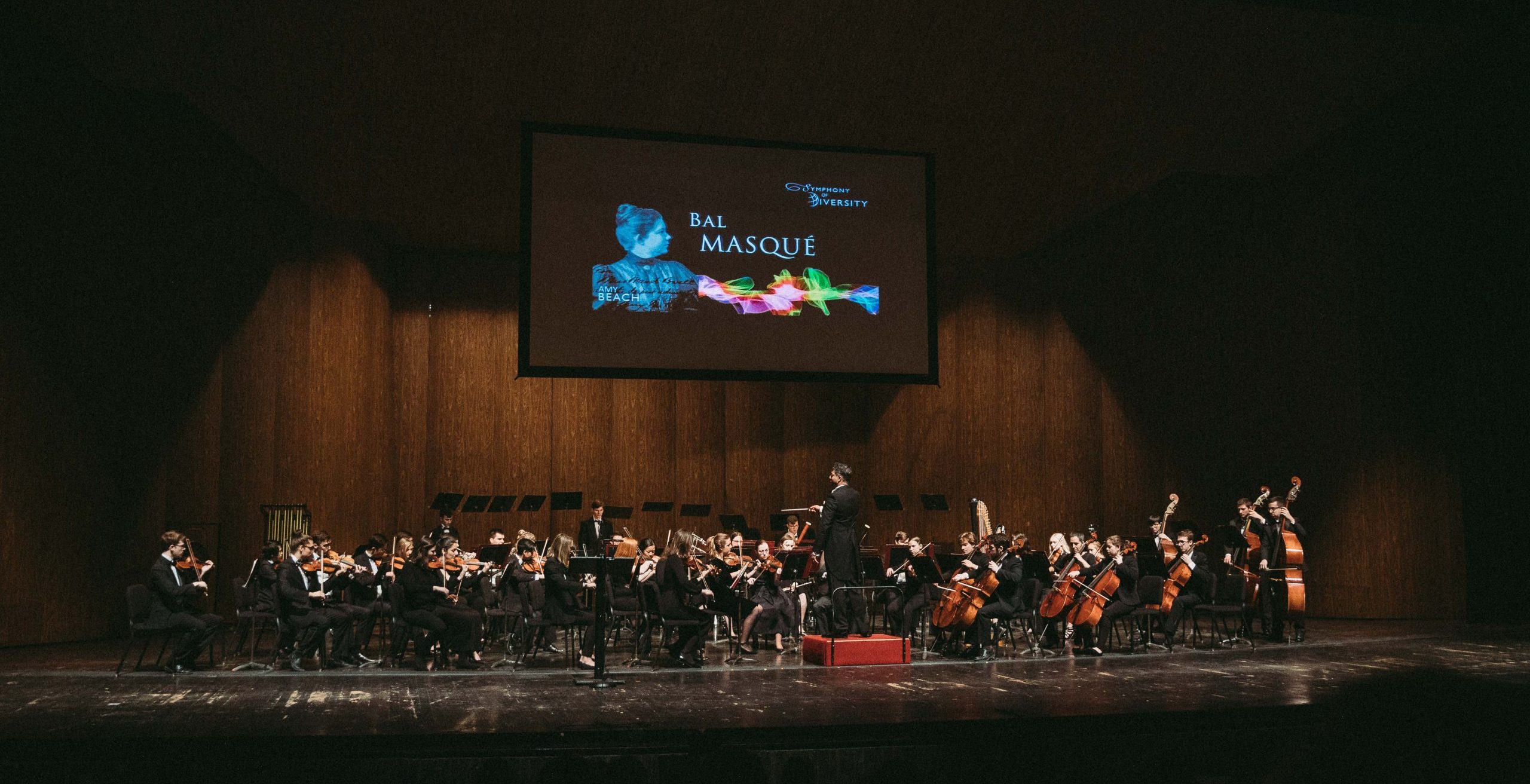Harmonious melodies of symphonic music filled the concert hall at Stephens Auditorium during Iowa State’s first “Symphony of Diversity,” held March 5 and 6. While an orchestral performance in Stephens is not an unusual occurrence, the concert’s repertoire of underrepresented composers was unique.
This year’s concert featured ISU’s Symphony Orchestra and Chamber Orchestra performing music written by African American, Mexican and female composers, whose works are rarely performed in concert halls. Guest artists included Adrian Anantawan, a Canadian violinist of Chinese and Thai descent born without a right hand; and Sarain Fox, an Anishinnaabekwe storyteller, activist, influencer, performer and dancer. Anantawan performed the “Concerto for Violin in D minor” by Amanda Maier-Röntgen, and Fox narrated “Nanabush and the Giant Beaver,” a creation story from the Algonquin Nation composed by Richard Mascall, while accompanied by the ISU Chamber Orchestra.
Jonathan Govias, director of orchestral activities, brought the concert’s concept with him to Iowa State from his previous position at the University of North Carolina at Charlotte, where students approached him about ways the ensemble could promote acceptance for people’s differences.
“I realized we have a literal and figurative platform in the concert hall where we can celebrate diversity and show it off,” Govias said.
While diversity and inclusivity statements are important, Govias contends that they are more impactful when put into practice.
“You can serve your artistic goals, you can serve your community in a genuine way. When you do that, you find that people will want to support you. I think that’s reflective in how the university has supported the event.”
“If diversity is a practice, then our students have to be practiced in diversity, which means we have to model it. We have to show them what is possible,” Govias said. “In this particular instance, it’s showing them that not only is diversity a good thing, but it’s a path to sustainability in the arts.”
Govias is pleased with the support Iowa State provided for the university’s inaugural concert, noting 17 academic units and administrative divisions offered financial support to launch the event.
“You can serve your artistic goals, you can serve your community in a genuine way,” he said. “When you do that, you find that people will want to support you. I think that’s reflective in how the university has supported the event.”
While Govias intends to continue the “Symphony of Diversity” at Iowa State, his ultimate hope is that the concert will no longer be necessary.
“I would like to say we don’t need to do this anymore because this is not an issue anymore,” Govias said. “If we get to a point where we are rendering ourselves obsolete, I would be delighted. The part and parcel to it is to normalize the presence of minorities and women both as composers and performers in the concert hall. If we can do that, that is a major objective we need to achieve.”
